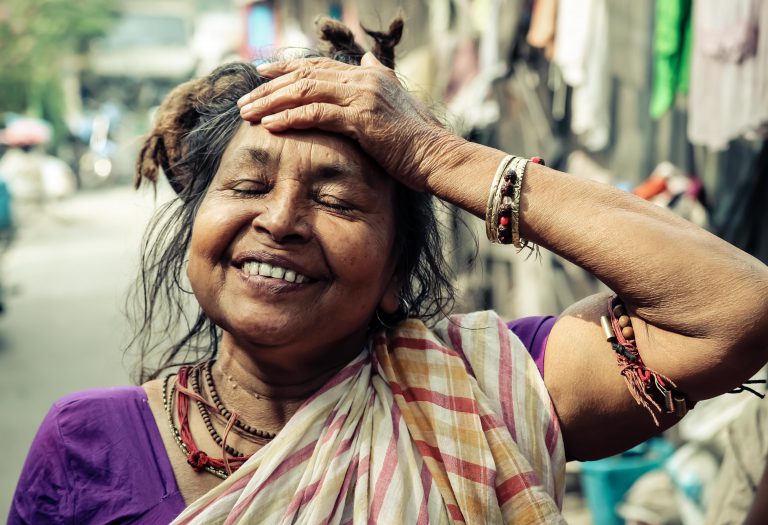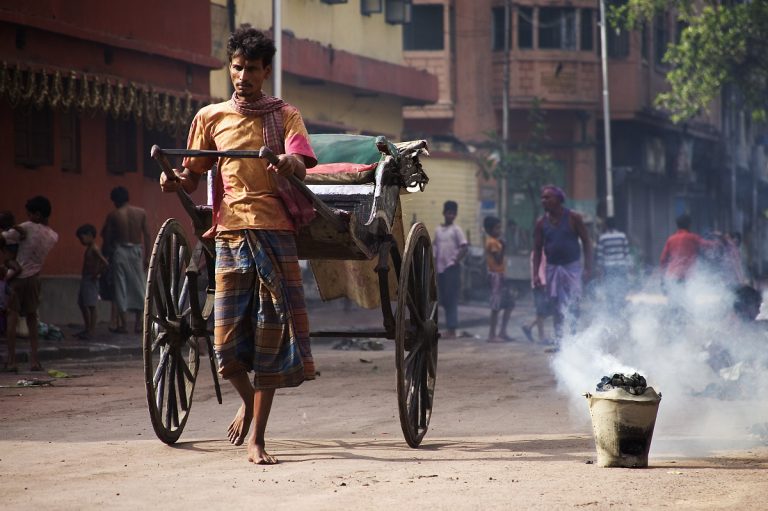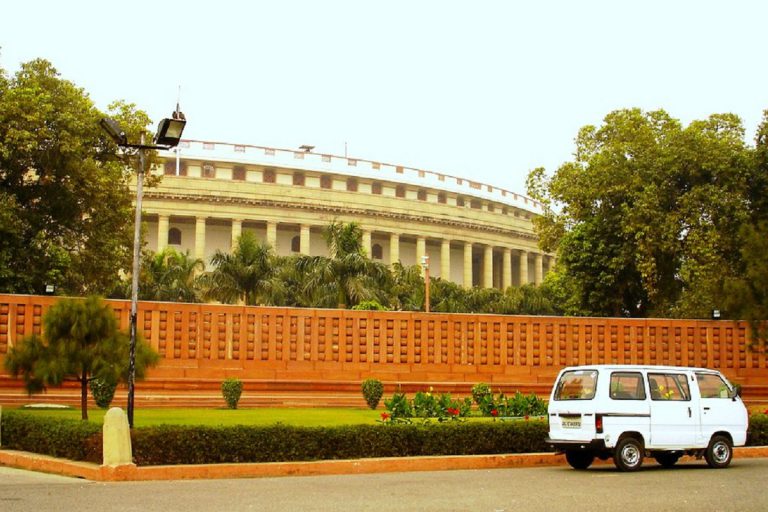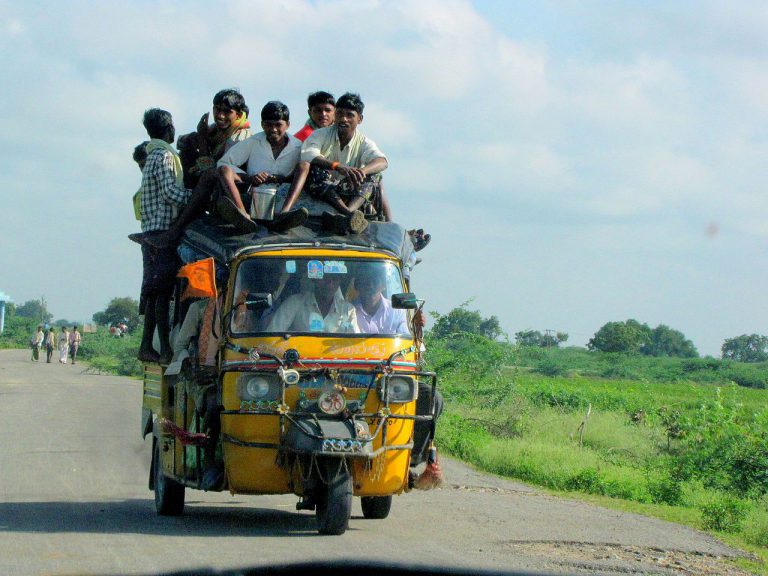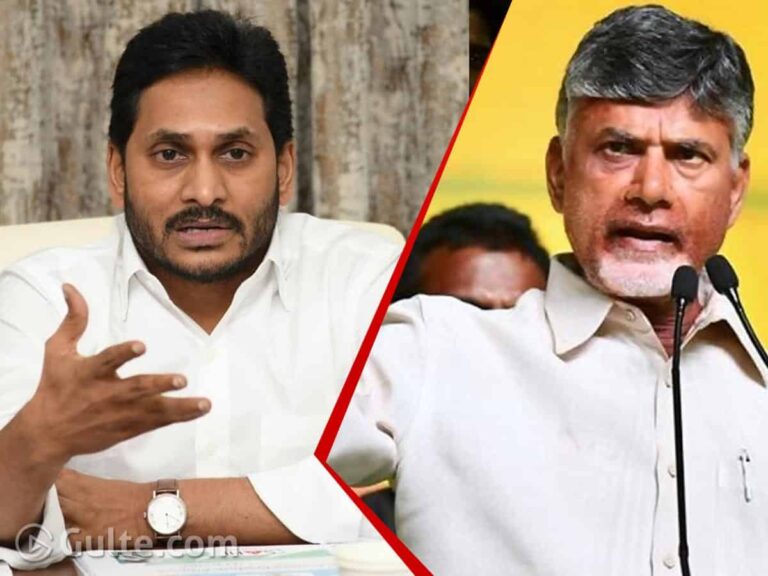Amma Vodi: An Edu-Policy Experiment in India
Sai is a member, Core Team and also the Managing Editor at The ArmChair Journal.
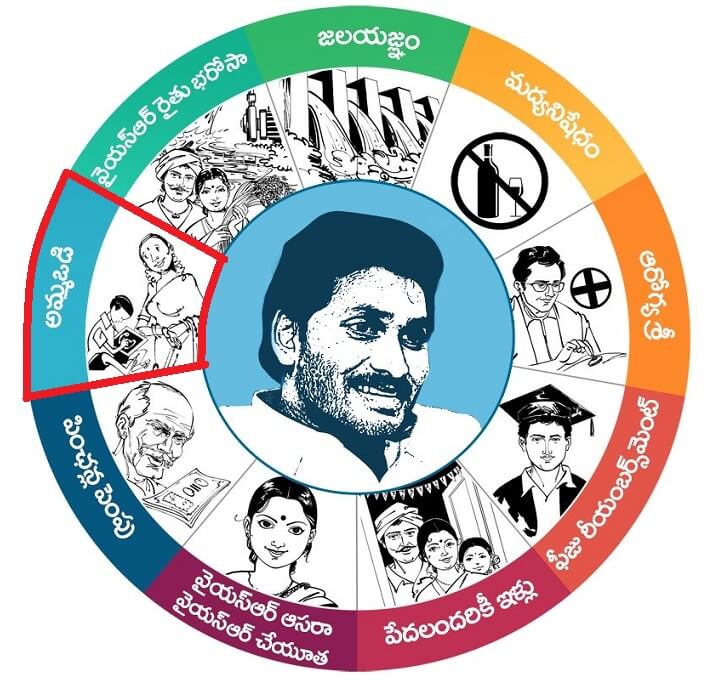
Conditional Cash Transfers or CCTs, in education, are a raging experiment across many countries in the world. Read on to understand the first-ever educational CCT program (Amma Vodi) in the Indian context that is happening in Andhra Pradesh. The 2019 State Assembly elections in Andhra Pradesh were intensely contested elections. It was the completion of the first term in the state after bifurcation. TDP, led by N. Chandrababu Naidu that was in power, was confident that its pro-industrial and development agenda, coupled with the ‘Amaravati sentiment,’ would seal the elections in their favour. As a part of his election agenda, Jagan created nine promises, named ‘Nava Ratnas’ that he promised to focus on if elected to power. One amongst them, ‘Amma Vodi,’ meaning ‘Mother’s lap,’ promised to monetarily incentivize mothers to send their children to school and ensure a minimum of 80% attendance.
Status of Education in Andhra Pradesh
The governments in the state of Andhra Pradesh have never accorded any focus to education. In India, Andhra Pradesh has one of the lowest literacy rates, comparable to those of Bihar and Jharkhand, that lag at the end of the list. Andhra Pradesh performs poorly on most education parameters in comparison with its south Indian peers.
Gross Enrollment Ratio is a measure to understand the number of children enrolled in a school in a particular age group. For example, if there are 100 children aged 6, of which 95 students are in school, the GER is 95%. A combined GER is calculated, taking into account these numbers across age groups, which is helpful in comparisons and other indicators. GER, coupled with school dropout rates, are critical, as they would directly influence the literacy rates and skilled labour opportunities in the future. On both these fronts, Andhra Pradesh lags in comparison with other states in India. A low GER and high dropout rates would imply low literacy rates and a lesser educated population in the coming years. I’m sharing a simple infographic comparing the best performing Indian states on the GER parameter vs. the worst-performing Indian states on the same.
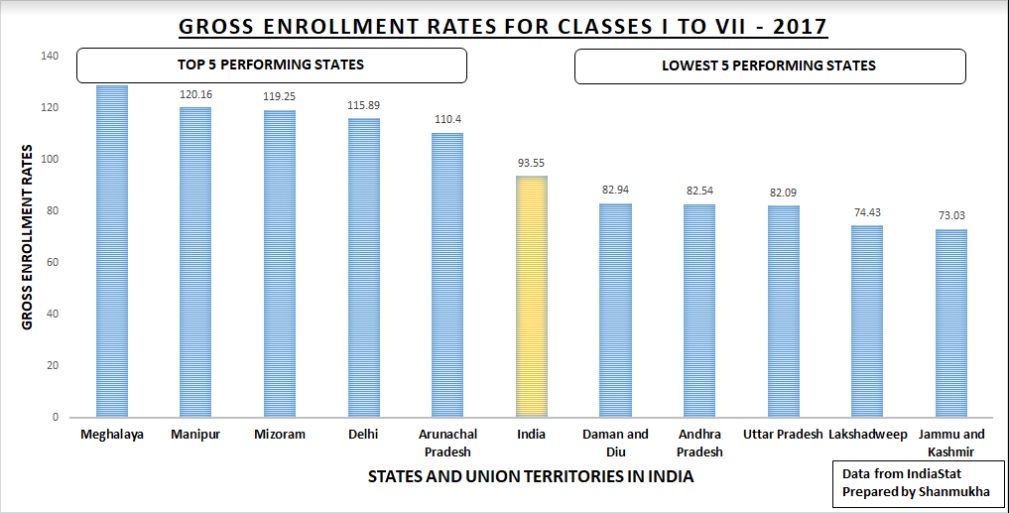
Experiments to boost GER and lessen dropouts
There have been two tectonic shifts in Indian education development from the time India became a republic. Since Independence, government schools have always provided education for free – it was the government’s responsibility to ensure education reaches everyone. If education was free, why weren’t we achieving a 100% literacy rate? In short, coupled with low and negative awareness about education, the cost externalities of education also play a significant role in our dismal literacy rates.
The first big change was the start of the National Programme of Nutritional Support to Primary Education (NP-NSPE), shortly known as the ‘Mid-Day meal scheme’ in 1995. By 2001, with Supreme Court directing all government and government-aided primary schools to implement this, it reached every primary school in India. This scheme’s objectives were 3-fold – to provide nutritional food to children, increase enrollment rate, and decrease dropout rate in schools across the country. While the prospect of a free nutritious meal a day was enticing for several parents and students, India wasn’t still achieving the expected numbers and enrollment rates. Soon, policymakers realized there were associated costs that prohibited parents from sending their children to schools.
Attending schools necessitated the children to have uniforms, shoes, bags, books, and entire sets of stationery, which were costly for families to afford. This prompted the next set of big-ticket reforms. Most state governments have caught onto this trend of giving for free a slew of school supplies to students – 3 pairs of uniforms, 2 pairs of socks, 2 pairs of shoes, school bag, an entire range of stationery, bicycles, free transport facilities, and much more. While this has been a recent phenomenon, it hasn’t yet been implemented equally across India. While the implementation differs, the intended impact is the same. Some provide a fixed reimbursement for each of the items (Eg, Delhi government), others provide the items directly (Eg, Karnataka, Tamil Nadu), and a few others give uniform cloth and a fee for stitching (Eg, Andhra Pradesh).
Conditional Cash Transfer for Education
While most of the schemes till now were trying to reduce the direct financial burden of education on families in all ways possible, ‘Amma Vodi,’ which is a Conditional Cash Transfer (CCT), is to cover the opportunity costs or indirect cost of sending children to study. While this is a first in India, it has been implemented in various countries across the world.
While the impact of conditional cash transfers has been positive, it’s not an entirely rosy picture. The first conditional cash transfer programs for education were implemented in Mexico and Brazil in 1997, from where they caught on to the rest of the world. In a paper that aimed to understand the impact of CCT, the authors opine, “Evaluations of CCT programs show that they have met their goals of increasing school enrollment and attendance (Baird et al., 2014, Behrman et al., 2005, Benedetti et al., 2016, Fiszbein and Schady, 2009, Ganimian and Murnane, 2016, Schultz, 2004, Todd and Wolpin, 2006), but also show that their effects on academic and cognitive skills remain unclear (Baird et al., 2011, Ganimian and Murnane, 2016, McEwan, 2015).”
While the literacy rates of Mexico and Brazil are not comparable to Indian standards, understanding the impact of CCT can be learnt from that of Bangladesh. Bangladesh was also one of the first countries in the world to experiment with CCT to boost enrollment and attendance rates and reduce dropouts from schools, with a clear focus on girl students. Being a recent phenomenon, studies measuring the short-term impact of CCTs are plenty, but studies trying to measure the long-term impact are close to none. Long-term assessments for such programs need a generational gap to understand the effects accurately.
While a considerable shift in literacy rates is being observed, no study is able to point out if the youth who were recipients of such schemes in their childhood are irreversibly out of poverty. And this is a critical point to consider. Doling out vast sums of money when the change intended is neither irreversible nor sustainable is futile.

When Bangladesh started its CCT in the early 2000s, its literacy rate was 10% less than that of India. As we can see from the above graph, Bangladesh has caught up today. Additionally, another focus of their program was to reduce the gender gap in education. In that regard, they have also achieved respectable gender parity in literacy rates.
What about Amma Vodi?
While Amma Vodi would be an experiment, most policymakers in India would be keenly tracking; there are many factors that would be needed to be studied in its context. Along with CCT, the Jagan government has also announced sweeping changes in education – from content update to changing medium of instruction, from extensive infrastructural improvements to intensive teacher training. But, Amma Vodi is a political program. And if its existence is dependent on people in power, its impact can never be assessed. In most countries that have successfully implemented CCTs, these programs enjoyed political patronage irrespective of people in power. It’ll only be a matter of time when other states begin to take note and implement this, at least to score some political mileage.
I see friction on three fronts. Early implementers have mostly been countries that have already reached a high level of literacy. Countries like Brazil and Mexico had already crossed 85% literacy rate when they launched this. The influx of new students did not dampen the quality or add additional pressure on the infrastructure or resources. With Andhra Pradesh not having reached even 70% literacy rate, and adequate infrastructure not in place, this could compromise the quality of education. Andhra Pradesh is already committing to spend close to a billion dollars every year on Amma Vodi alone. Given the state of the economy currently, it could be argued that this is a good step to stimulate demand and increase consumption in the economy, but in reality, not only is it inducing heavy pressure on the state finances, it is also not being optimally spent.
Second, CCTs, in short, are the easy way out. Rather than doubling down on efforts to spread greater awareness regarding education, appeasing the public with money will do no good in the long run. In Amma Vodi, the compensation is given till the student completes the 12th standard. What after that? A CCT such as this (like Amma Vodi) would not only disincentivize parents from spending money for further education but would also leave the students neither ready nor appropriately skilled to join the workforce. The government could spread awareness to ensure effective utilization and saving of the CCT income to fund further studies or skilling programs.
Lastly, conditional Cash Transfers such as this, akin to spoon-feeding, have come under fire for promoting a lazy attitude amongst the public. I’ve had the opportunity to witness transformational work by NGOs in India that have vastly improved enrolment and attendance rates and decreased dropouts without using monetary incentives. Taking the longer and effort-intensive route, these NGOs work on fundamental problems by improving the mindset of parents, transforming the teaching experience, motivating students to dream further and also creating a healthy ecosystem to provide support after school. This is the hard path but a more fruitful one. Programs such as these CCTs fast become political plays, and it’s hard to end it, even when not necessary. But for this, there is a long way to go.
Image Credit: Timesalert


